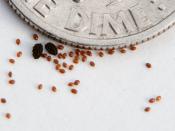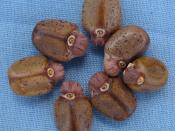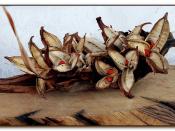Factors affecting seed and seedling vigour
Seed vigour is a term encompassing the sum total of those properties of the seed that determine the potential performance of the seed or seed lot during germination and seedling emergence (Perry, 1978). Rapid and uniform germination are among the properties of vigorous seeds (Argerish & Bradford, 1989). Low vigour adversely affects such factors as optimal emergence, stress resistance and uniform growth of emergent seedlings (Patrick et al, 2000) and is thus of great economic importance. Seeds, which grow well under the ideal conditions of the germination test, often do not perform so well when planted under the more stressful conditions of the field. Some seedlots perform particularly badly under stress, and are said to be of low vigour. A considerable amount of research has been carried out to discover the causes of low vigour, since if it could be prevented, fewer low-vigour seedlots would need to be wasted (pers.comm.
Dr. A. Goldsworthy, 2003). Unfortunately, there does not seems to be a single underlying cause.
Seeds which are either smaller or larger than normal, are often of low vigour. Sawan et al (1999) found that both seed size and seed density are correlated with seedling vigour in cotton. Small seeds may lack food reserves, and large seeds may be more easily damaged by harvesting or have metabolic abnormality. These can be removed from an otherwise healthy seedlot by seiving. The seedling characteristics most closely associated with lower seedling vigour are a small embryo, small primary leaves on the main shoot, a low leaf area to leaf weight ratio, and a low frequency of coleoptile tillers (Richards & Lukacs, 2002).
Sometimes low vigour seeds have a low protein content. This may be due to inadequate nitrogen fertilisation. Application of more nitrogen will remedy...


